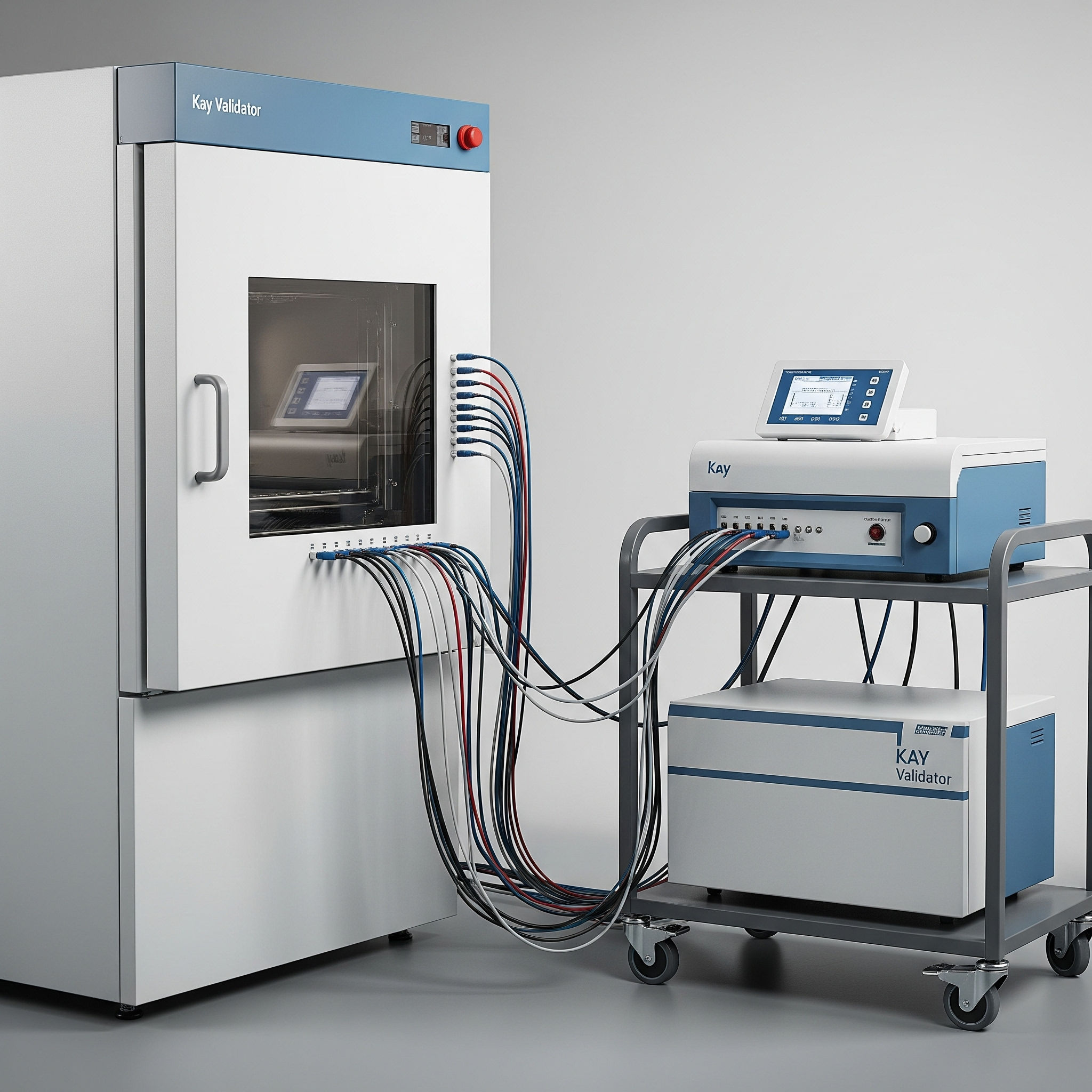The Stability Manager stood in the 25C/60%RH chamber with his QA Director on one side and the FDA Inspector on the other. The Inspector pointed to a bin on an upper shelf and asked, “Can you tell me how many samples are in that bin?” A lab assistant punched the study number and chamber location into an I-Pad and said, “we have 18”. The bin was pulled down and the Manager counted out loud, stopping at 16. The inspector made a note and pointed to another bin on the other side of the chamber; “How about that one?” “Twenty-six.” The Manager’s count, much more quietly this time, went to 27. The Inspector made another notation and moved on to other topics. Three days later, an “unsatisfactory Stability Inventory” was one of several 483’s discussed in the exit interview.
What do we mean by inventory?
- in·ven·to·ry, noun, a complete list of items such as property, goods in stock, or the contents of a building.- Dictionary Definitions from Oxford Languages
- Inventory or stock refers to the goods and materials that a business holds for the ultimate goal of resale, production, or utilization. Inventory management is a discipline primarily about specifying the shape and placement of stocked goods. – Wikipedia
- Stability Inventory: What you have, how many you have, where it is located, what its purpose is, when you put it there, when you will take it out, why it’s enough to cover its intended purpose and extra needs- editor, StabilityHub
Why are inventories important?
The fact is, there are no specific requirements for inventories in regulations and guidances, but they are inferred in the US Code of Federal Regulations and industry and regulators need them to ensure success:
- Industry’s Inventory purpose – Demonstrate that we have enough to do what we want. Failure results in unfinished studies, inadequate data, and unapproved registrations.
- Regulatory Authorities’ Inventory purpose – Demonstrate control. Sample integrity is as important as data integrity. Failure results in FDA 483’s and Warning Letters, including the following:
- 483: FDA investigators observed hundreds of samples in storage chambers. When asked to see the sample logbooks for these chambers, the investigators were informed that no logbooks were maintained identifying the contents of the stability chambers.
- 483: There is no written standard operating procedure in place to control, secure, and allow authorized personnel to access the stability chambers. It appears that the currently established system allows access to every employee of the firm with probability to misplace and/or change the stability samples without formal/official chain of custody.
- 483: Established sampling plans/laboratory control mechanisms are not followed/documented at the time of performance.
- 483: Deviations from written sampling plans/test procedures are not recorded/justified.
How can there be inventory compliance issues with no specific inventory regulation? It is a regulatory “expectation,” much like the expectation that most testing is completed in a timely fashion, often 30 days. Failing to meet a regulatory expectation produces citations; regulations and guidances notwithstanding. How can we put as much distance as possible between our Stability inventory and a 483? Let’s consider…
Components of keeping an acceptable inventory
- Unique, relevant, and understandable identification of samples
- Documentation of identity, purpose, and rationale for quantity
- Specific and uniquely identified locations
- Controlled conditions of temperature, relative humidity, light, etc.
- Monitoring of those conditions and assessment of impact by deviations
- Security provisions, including locks and lists of those having access
- Procedures for any addition or subtraction of samples and how to record the change
- Documentation of changes as they occur and notifications as appropriate
- Periodic verification of accuracy and function of the inventory system
- Corrective and Preventive Actions for deviations
Potential Problems
Besides missing a component from the list above, here are other potential problems:
- Over-access to samples by unauthorized and under-trained personnel
- Management that ignores or removes inventory safeguards for the sake of expediency
- Sheer volume of samples makes inventory verification a massive time and resource-consuming task
- Samples held at extreme conditions require temporary and possible impactful removal in order to count them—a choice that may involve risk to personnel or risk to samples
- Shortages of samples to meet required testing
- Overabundance of samples well beyond the testing requirements
- Unplanned and unauthorized studies entering the inventory system
- Regulatory citations for lack of control/tolerating known deficiencies
- Samples held beyond a reasonable period after the completion of a study
- Samples shared with other research departments that could produce data outside of the official study and be confused with the official data (potential for fraud)
- Implication of a flawed LIMS that allows for inventory abnormalities
- Loss of integrity in chain of custody for samples arriving/departing the Inventory system
- Inventory breaks down when samples are transferred to or from a third party organization
Establishing an Effective Inventory System
- Start with mapping your process from sample creation through final sample destruction (much of this occurs outside the Stability Function but generates information critical to the inventory process.)
- Conduct a risk assessment exercise for each step of a sample’s journey.
- Utilize the “acceptable components” list above for comparison with your existing system.
- Review any previous audit or regulatory observations of your inventory system.
- Involve all stakeholders participating in the entire mapped “route” for both the mapping process and risk assessment.
- If possible, utilize an electronic system that tracks samples and sample counts and sends a discrepancy notification to management whenever counts do not match expectation or plan. Going digital is the trend in the Medical Product industry and greatly aids in achieving better quality and compliance.
- Create your “improved” model with all required procedural updates and follow your corporate change control process.
- Establish metrics to help ensure that information is accurate and on time. Trend errors and omissions over time and use this data to target areas that need improvement.
- Initiate or complete a current accurate inventory, identifying newly discovered discrepancies along the way and linking their correction to your new inventory system. Choose your inventory verification method going forward and utilize continuous improvement to drive error rates toward zero.
Inventory Approaches
Point-In-Time Comprehensive Inventory. – Traditional, Most Problematic
Count and record everything in a brief period.
Advantage: Establishes a baseline quickly so that there are minimum changes during the counting period.
Disadvantage: Extremely resource intensive (lots of people and hours) and size of task invites further inaccuracies. Needs to be repeated at least yearly for due diligence. Samples may be inadvertently thawed or cooled when removed from a chamber for counting.
Rolling Inventory – Traditional, but Less Traumatic
Inventorying by segments, such as a chamber per month or all chambers at a particular set-point per month.
Advantage: Significantly reduces the size of the immediate task and number of folks pulled from routine duties.
Disadvantage: Potentially requires a dedicated head count for the task. Still has some potential for inaccurate count. Inadvertent temperature exposures.
Ad-Hoc or No Inventory – If We Don’t Know It’s Broke, We Ain’t Fixing It
Inventory only when quality system is significantly challenged by discovered inaccuracies. Relies on confidence in a “validated” system.
Advantage: Significant savings in resources.
Disadvantage: Potential for undiscovered inaccuracies over long periods of time; potential for a regulatory flag by those who view this as ducking Control responsibility.
Risk-Based Mini-Inventories – Verification of High Confidence / Validated Systems
Routinely, such as monthly or weekly, spot check a certain number of randomly selected samples per chamber. For example, check study inventories in each chamber each month. Any discrepancies will then trigger a pre-defined escalation, such as a full inventory of the offending chamber and then all chambers if additional discrepancies are found.
Advantage: Potentially significant savings in resources.
Disadvantage: Potentially significant unplanned resource drain if the escalation builds out of control. Also, there are similar disadvantages as the Ad-hoc or No Inventory approach, above. One could require a statistical rationale to justify it, as well.
“Pullventory” – Author’s Preference
Inventory individual stability studies whenever there is a sample pull for that study (scheduled or special case). Reduce labor requirements by packing convenient numbers of samples (such as 100, 500, etc) into “breathable” bins and using a tamper evident seal to demonstrate that no change in sample numbers has occurred while the seal is intact. Counting can then be expedited by counting whole bins. Reconcile and record each updated count as part of the sample pull documentation.
Advantage: No extra resources required since most studies have a pull point at least once per year. Counting is easy- say 6 tamper-evident boxes of 100, plus one previously opened box counted to have 87 samples = 687 samples counted in the time taken to count 87. Easy to have a second individual verify the count in real time. By this approach 100% inventory of all Stability samples is achieved in a year. Best of all, no previously occurring error ever emerges from a storage bin; all are caught at the time of pull.
Disadvantage: Potential criticism that the initial count takes up to a year to complete, but studies not scheduled for a pull in several months could be inventoried sooner on days when the regular pull schedule is light. Potential for some additional time needed for sample pulls if the counting process cannot be simplified through tamper-evident sealed containers.
Summary
Accurate stability sample inventories are important in demonstrating control in addition to supporting successful stability studies and contributing to compliance within a wide range of associated functions. There are more aspects to a good inventory system than just numbers; building a better system involves mapping, risk management, stakeholder involvement, pertinent metrics, change control and selection of an inventory method that your company can support with solid justification. We need to act now to ensure that our Stability inventory is a strong link in our quality system. Inspectors will be impressed with the accuracy and control, management will be content with reduced resource consumption for counting and corrections, and Stabilitarians will be happy to have conquered their inventory challenges.
References
- 21 CFR 211.160(a) Laboratory Controls; General Requirements
- 21 CFR 211.166 (a) Stability Testing
- 21 CFR 820.140,150 Handling and Storage of Devices
Share This Article with the Stability Community!
June 10, 2025
Disasters occur whether we plan for them or not, but planning ahead to mitigate their impact and recover from their damage can make a big [...]
June 2, 2025
So, you’ve gone through the process of formulating user requirements, chamber selection and purchase. With the equipment in place; how do we go from this [...]
April 26, 2025
It’s Stability Information Month and time to go a little further than regulations and processes and talk about people, namely the ones who comprise the [...]
Share your questions and experiences
A stabilitarian encounters new situations every day. StabilityHub’s discussion forums give Stabilitarians an opportunity to ask questions and offer solutions to specific scenarios. Join in the conversations with other Stabilitiarians and share your knowledge!
A stabilitarian encounters new situations every day. StabilityHub’s discussion forums give Stabilitarians an opportunity to ask questions and offer solutions to specific scenarios. Join in the conversations with other Stabilitiarians and share your knowledge!





